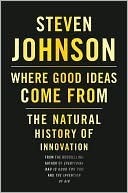More on this book
Community
Kindle Notes & Highlights
Read between
June 11, 2023 - February 25, 2025
as imagination bodies forth The forms of things unknown, the poet’s pen Turns them to shapes and gives to airy nothing A local habitation and a name. —SHAKESPEARE, A Midsummer Night’s Dream,
In Darwin’s own words, stumbling across the ecosystem of a coral reef in the middle of an ocean was like encountering a swarming oasis in the middle of a desert. We now call this phenomenon Darwin’s Paradox: so many different life forms, occupying such a vast array of ecological niches, inhabiting waters that are otherwise remarkably nutrient-poor.
Coral reefs make up about one-tenth of one percent of the earth’s surface, and yet roughly a quarter of the known species of marine life make their homes there.
Presaging a line he would publish thirty years later in the most famous passage from On the Origin of Species, Darwin writes, “I can hardly explain the reason, but there is to my mind much grandeur in the view of the outer shores of these lagoon-islands.” In time, the reason would come to him.
From an early age, the Swiss scientist Max Kleiber had a knack for testing the edges of convention. As an undergraduate in Zurich in the 1910s, he roamed the streets dressed in sandals and an open collar, shocking attire for the day. During his tenure in the Swiss army, he discovered that his superiors had been trading information with the Germans, despite the official Swiss position of neutrality in World War I. Appalled, he simply failed to appear at his next call-up, and was ultimately jailed for several months.
Kleiber discovered that this scaling phenomenon stuck to an unvarying mathematical script called “negative quarter-power scaling.” If you plotted mass versus metabolism on a logarithmic grid, the result was a perfectly straight line that led from rats and pigeons all the way up to bulls and hippopotami.
But the more species Kleiber and his peers analyzed, the clearer the equation became: metabolism scales to mass to the negative quarter power.
As the science writer George Johnson once observed, one lovely consequence of Kleiber’s law is that the number of heartbeats per lifetime tends to be stable from species to species. Bigger animals just take longer to use up their quota.
The number of gasoline stations, gasoline sales, road surface area, the length of electrical cables: all these factors follow the exact same power law that governs the speed with which energy is expended in biological organisms. If an elephant was just a scaled-up mouse, then, from an energy perspective, a city was just a scaled-up elephant.


